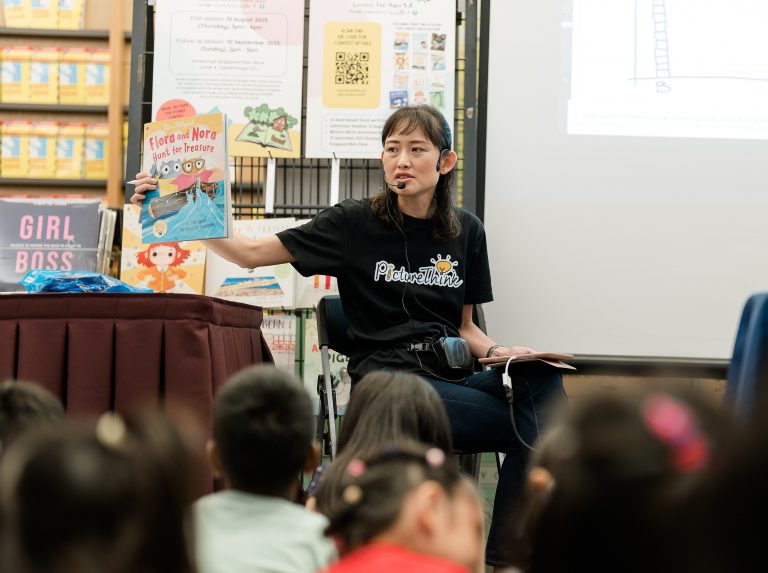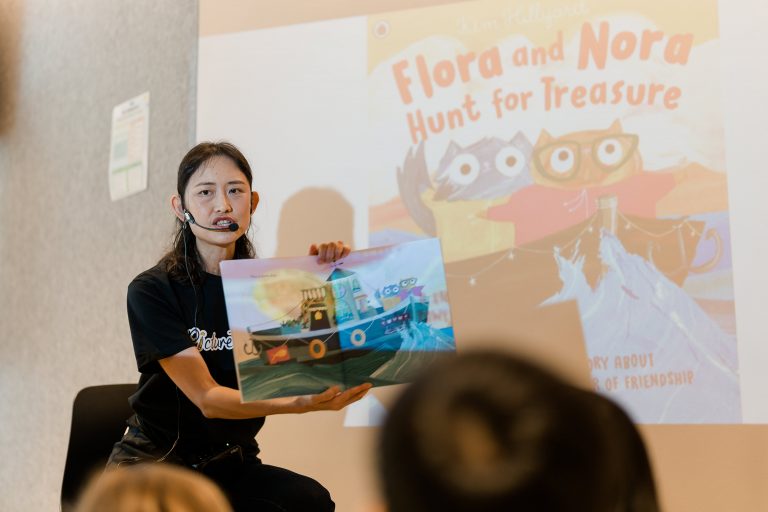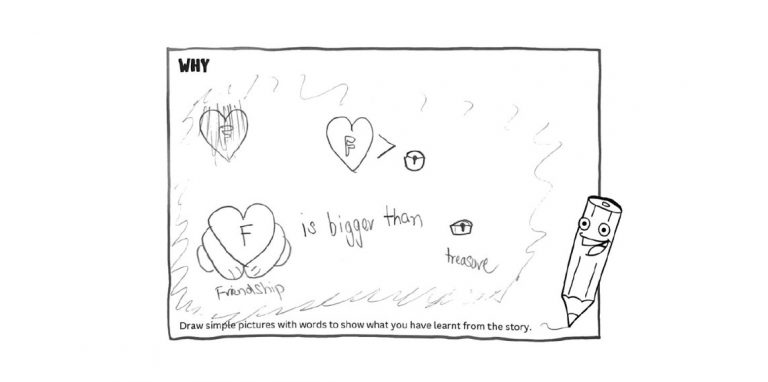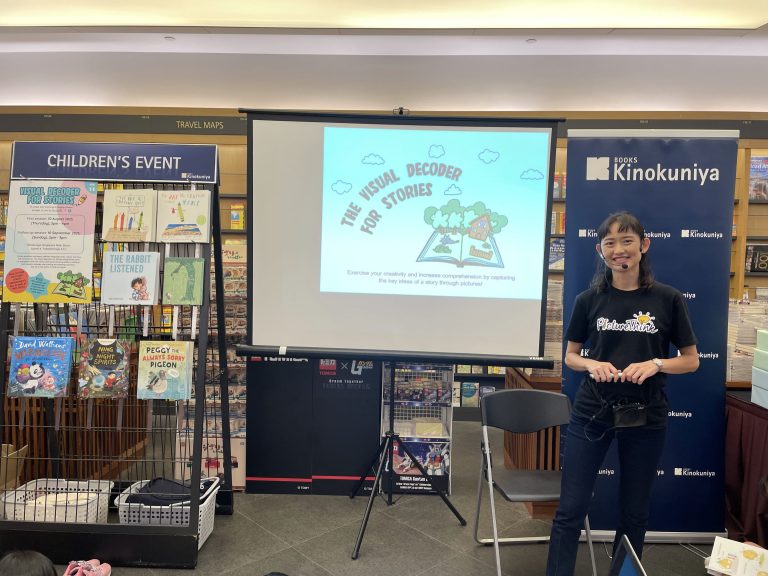Visual Decoder for ‘Sleeping Beauty’
In the Visual Decoder for Stories, we use simple pictures to summarise and synthesise the key ideas we take from a story. Here is an example based on the fairytale, Sleeping Beauty.
Story source: https://etc.usf.edu/lit2go/68/fairy-tales-and-other-traditional-stories/5102/sleeping-beauty
For ‘WHO/WHAT’, we draw the key characters and things. In Sleeping Beauty, we can draw the Princess and Spindle to represent the key WHO and WHAT.
For ‘HOW MANY/MUCH’, we draw charts to show something in the story that can be measured. So here, we can use shapes, stacked like a bar chart, to show that there are 7 good fairies, 1 evil fairy and 1 princess.
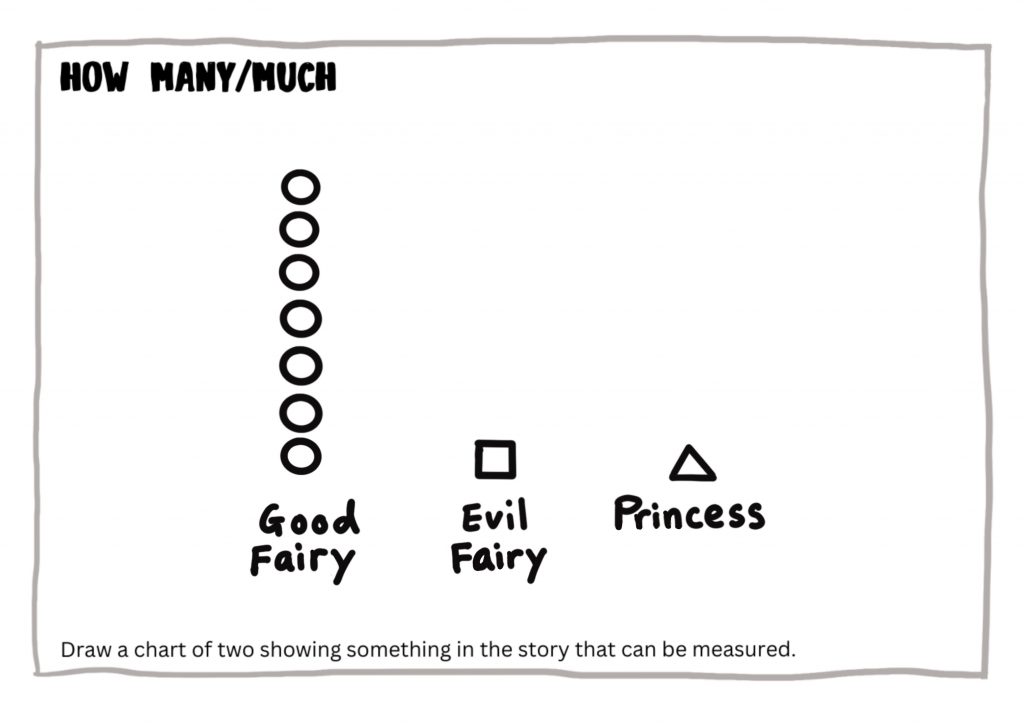
For ‘WHERE’, we can draw a castle as that is the location where most of the action happens.
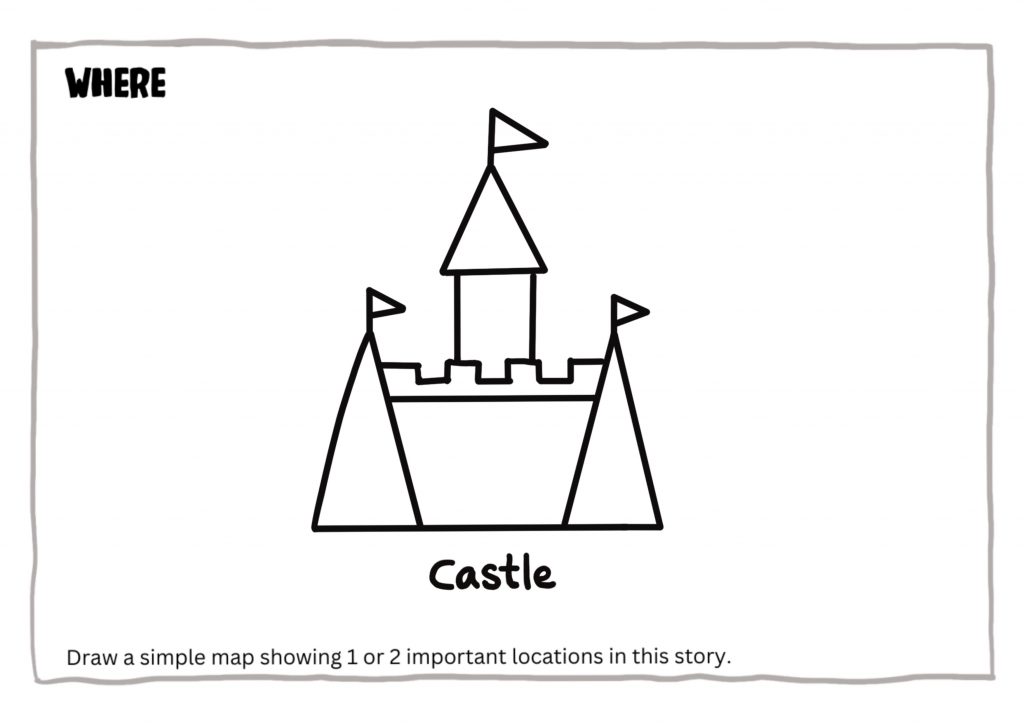
‘WHEN’ shows a timeline of key events. Here’s the event each picture shows.
- The invited fairies came for the baby princess’ christening and each gave her a wonderful gift.
- An old fairy cursed the Princess to prick her finger with a spindle and die on her 17th birthday. However, a young fairy changed the curse. Instead of dying, the Princess would sleep for a hundred years. And at the end of that time, a king’s son, the Princess’s true love, would find and awaken her.
- The Princess pricked her finger and fell asleep.
- One day, a 100 years later, a Prince came to the castle. Magically, the stiff branches that surrounded the castle gave way to let him in.
- The Prince awakened the Princess with a kiss, breaking the enchantment.
- They got married and lived happily ever after.
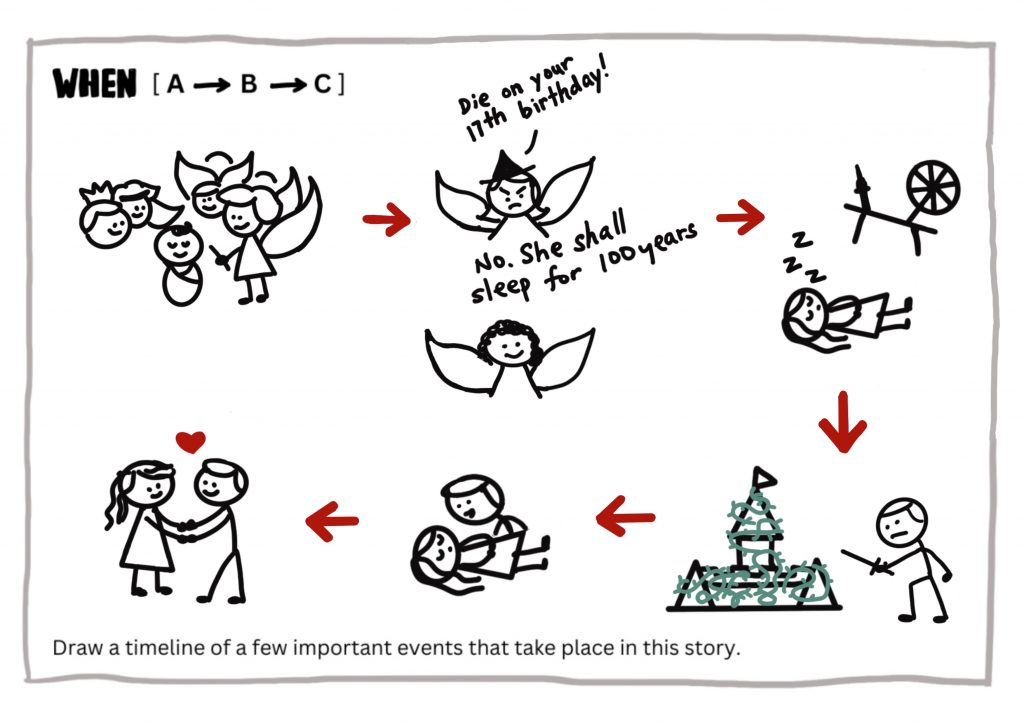
For ‘WHY’, we draw a picture to show what we have learnt from the story. Moral lessons are personal. Here, we share two examples.
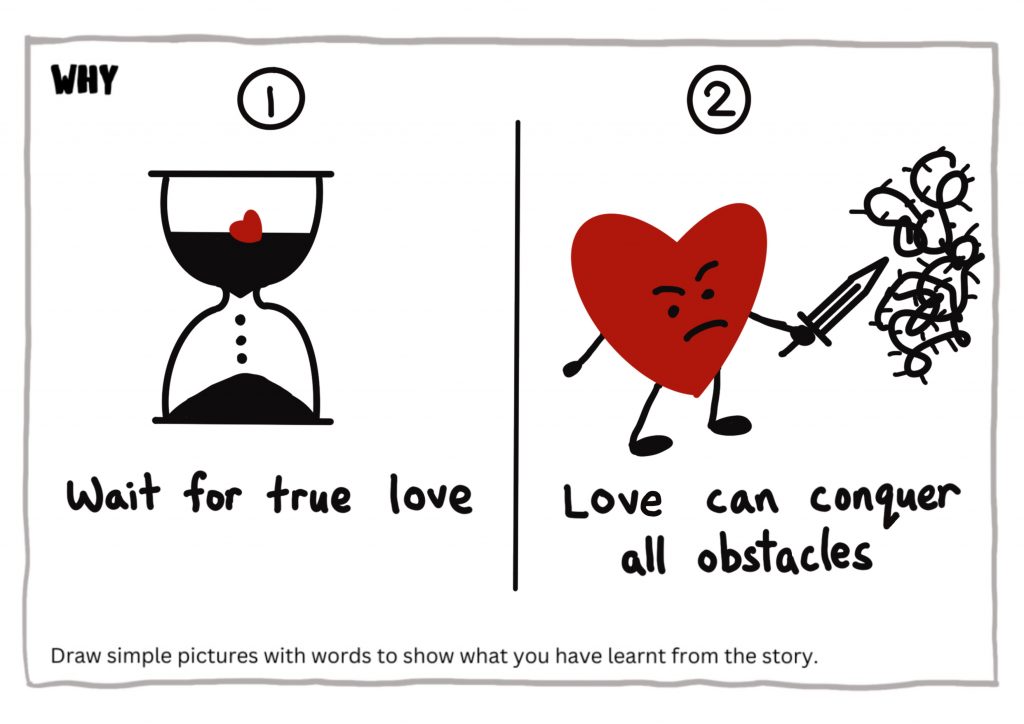
The first picture shows a sandglass. The heart, representing love, will only flow out at the end of the length of time. In Sleeping Beauty, one lesson we can take away is to patiently wait for your true love.
The second example shows a heart-shaped figure battling stiff branches to clear the way. It represents the lesson: Love can conquer all obstacles.
What’s the lesson you took away from this story?



